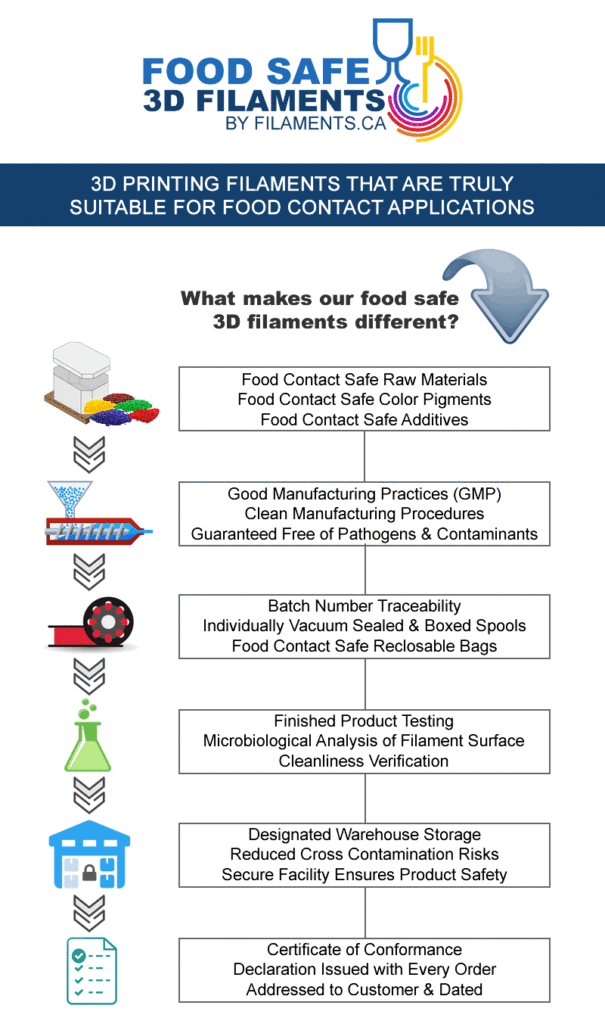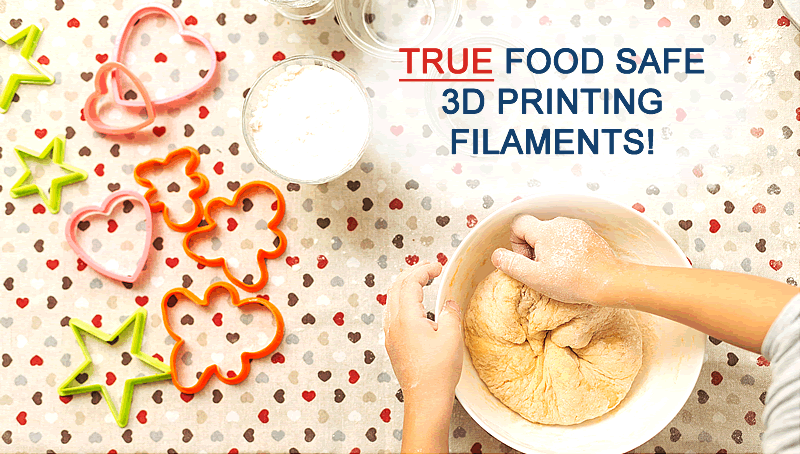It’s not usual but it is possible. Filaments.ca, a Canada-based manufacturer of materials, recently launched TRUE Food Safe PLA (True FS PLA) 3D printing filament.
Intended for applications where food safety is required, users will now 3D print objects such as cookie cutters, cake toppers, customized kitchen tools for restaurants, bakeries etc.
A material that can be in contact with food
The PLA is an easy to print material. It does not require any particular settings or high temperatures, enclosure or any other advanced configurations. It is non-toxic, low-odor and its use would be safety.
Made from a biopolymer from Ingeo™ developed specifically for 3D printing, the material enables sharper colors and exhibits faster crystallization rates. Furthermore, thanks to this fast crystallization rate, it is also possible to reach up to 50% faster printing speed.
The polymer can also be annealed (heat treated) to increase crystallization and improve the heat deflection temperature of the 3D printed part, making it safe to use in a dishwasher for instance.
The manufacturer has taken all precautions to to ensure that food safety is a key component in the production of this filament. From FDA approved raw materials, including food safe color pigments and additives, to a clean manufacturing facility, good manufacturing practices, batch trace-ability, post extrusion testing, segregated storage and conformity certification.
 Food safety and 3D printing
Food safety and 3D printing
A 3D printer comprises a range of components such as the gears, tube, hot-end assembly and nozzle, that can be in contact with the filament prior to extrusion. Users should keep in mind that these parts are most likely not made of food contact grade components and are not being regularly cleaned/sanitized and as such may have an affect on the cleanliness of your final product.
Filaments.ca therefore recommends to use a stainless steel nozzle and obviously the printer should be keep in a printing environment as clean as possible.
Lastly, “all FDM 3D printed parts have a surface finish comprised of visible layer lines created by the 3D printing process. These layer lines can harbor small pieces of food and promote the growth of bacteria, pathogens and other harmful contaminants. If your 3D printed part is expected to come into contact with food on a regular basis, measures should be taken to ensure that the part is thoroughly cleaned, sanitized and verified clean prior to use.”
For further information about 3D Printing, follow us on our social networks and subscribe to our newsletter
Would you like to subscribe to 3D Adept Mag? Would you like to be featured in the next issue of our digital magazine? Send us an email at contact@3dadept.com
//pagead2.googlesyndication.com/pagead/js/adsbygoogle.js
(adsbygoogle = window.adsbygoogle || []).push({});



